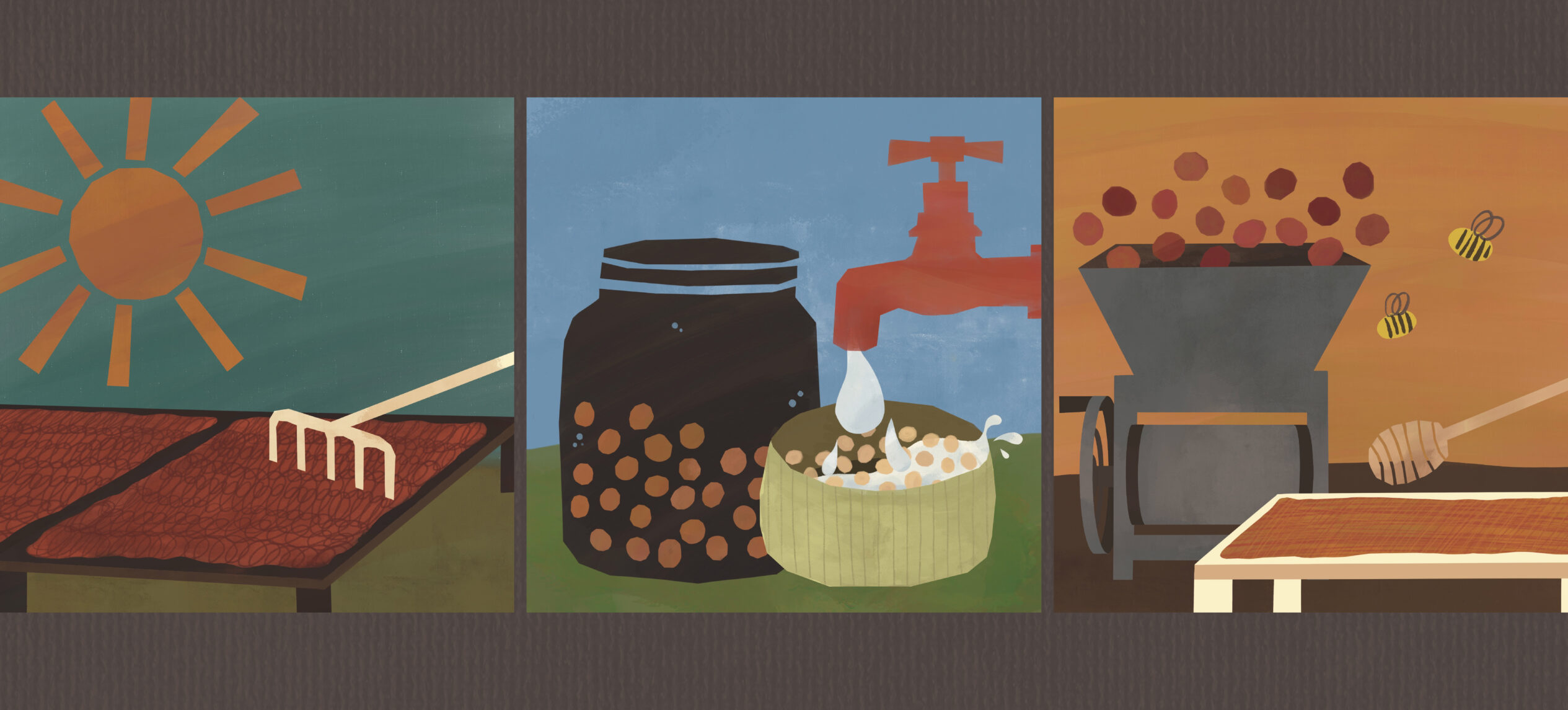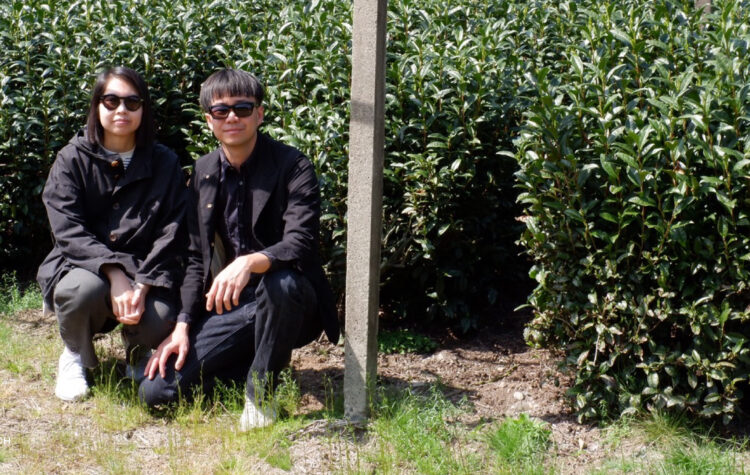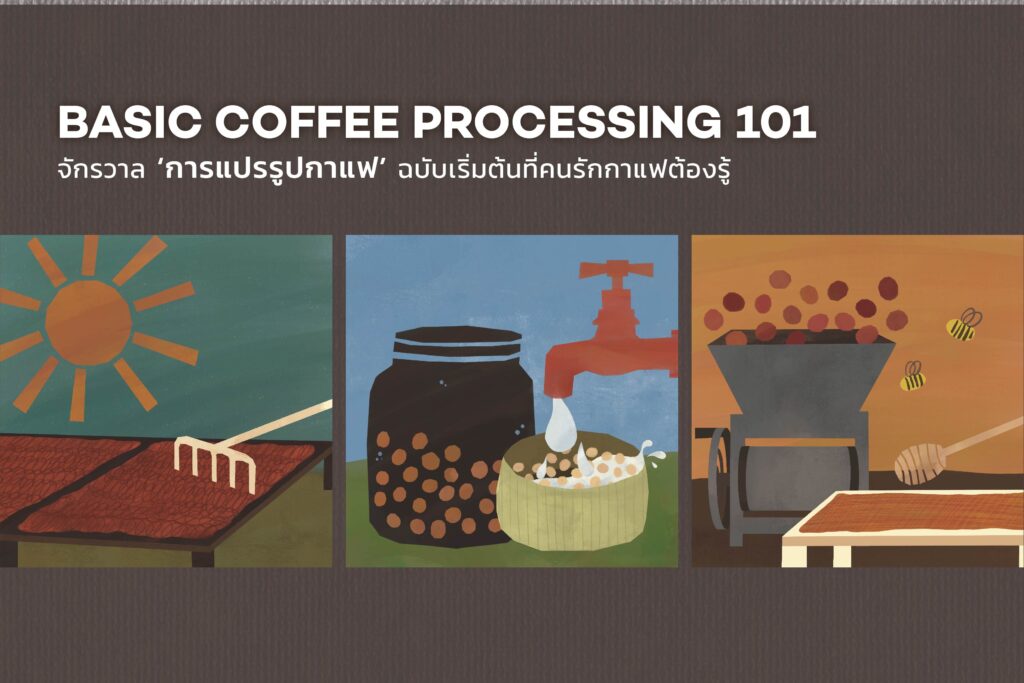
Countless people enjoy drinking Roots coffee, but many people still have yet to discover the backstory behind each cup. Coffee processing is a complex and nuanced topic with many methods, which can be overwhelming for those trying to learn about it. As a result, many people may feel discouraged from delving into the intricacies of coffee processing right from the start.
While it’s true that knowledge of coffee processing is essential for farmers, producers, and roasters, it’s also valuable for coffee drinkers to understand. Learning about different coffee processing methods can guide you toward finding your perfect cup and also lets you explore new flavors of coffee! After this, you’ll enjoy the world of coffee even more and develop a deeper appreciation for the unique qualities of each method and the ‘origin’ of coffee itself.
Today, Roots Coffee Education is excited to share with you basic coffee processing methods that anyone can easily understand. But if you’re interested in learning about techniques that have emerged from recent experimentations, stay tuned for our next article.
WHAT | WHAT IS COFFEE PROCESSING?
When it comes to ‘coffee processing,’ many people assume it’s simply the process of turning ripe red coffee cherries into green coffee beans ready to be sent to roasters and cafes. However, coffee processing also plays a significant role in the flavor and aroma of the final coffee product.
WHY | WHY IS COFFEE PROCESSING IMPORTANT?
From a farmer’s perspective, these processing steps are crucial to prevent their coffee cherries from going to waste. When coffee cherries are brought to the processing plant, the processor must act fast and process them within 24 hours. This is because coffee cherries are delicate fruits that are prone to spoilage. If the flesh of the coffee fruit rots, it can damage the coffee beans.
As for processors and coffee makers, coffee processing is a crucial step in creating unique and distinctive products. In other words, the various processing methods make it possible to create new and exciting coffee flavors and characteristics. Variety increases customer options and expands business opportunities for mills, roasters, cafes, and coffee drinkers.
HOW | HOW DOES COFFEE PROCESSING WORK?
Today, we’re going to explore the coffee processing methods you may have heard of before, such as Washed, Honey, and Natural. But before we delve into how these methods create unique coffee flavors, let’s take a closer look at the origins of each process.
Coffee from different origins or plantations are processed in various ways, some through a single process and others through multiple types of processes. The reasons for this depend on the preferences of farmers, processors, and the market. However, it is essential to note that the choice of processing method is often determined by the available resources and conditions unique to each region.
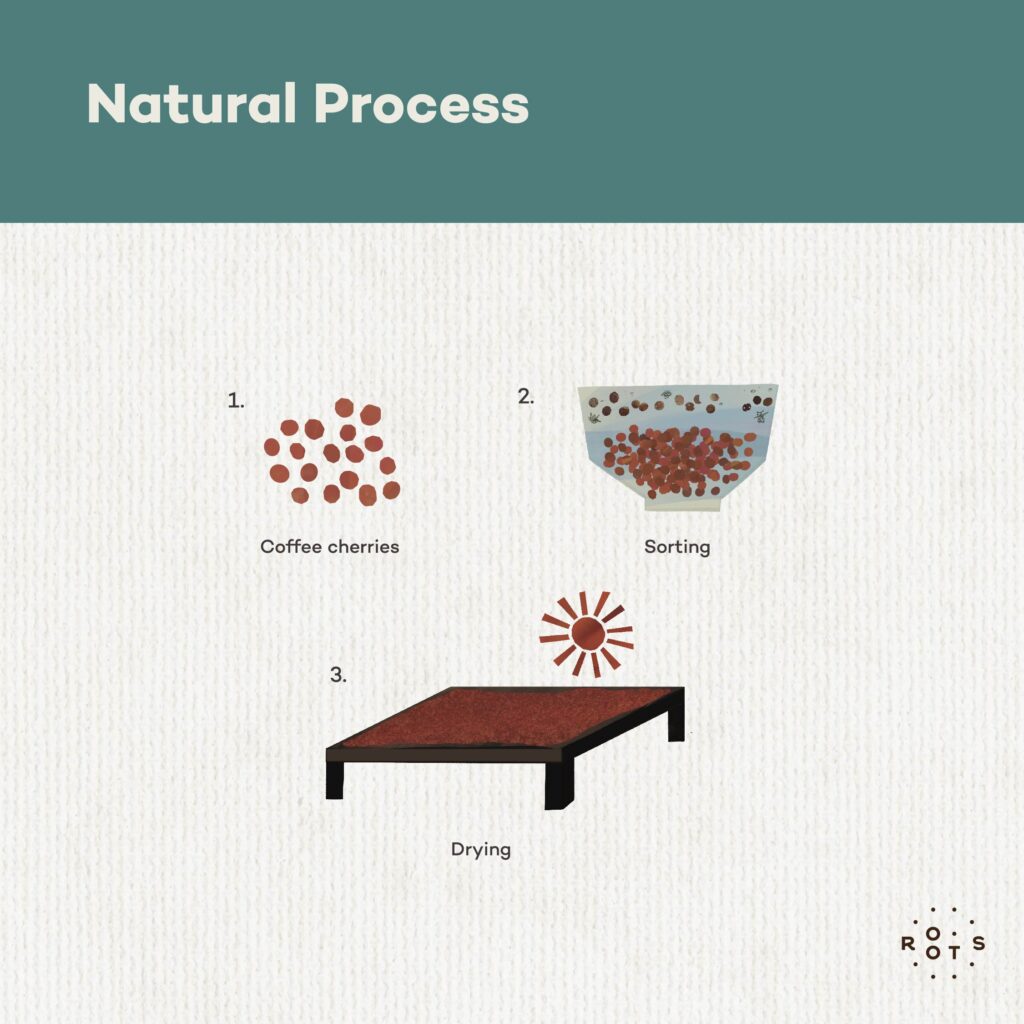
Water and production technology are two critical factors that influence the design of the coffee processing method. In regions with water scarcity and limited access to technology, such as the ancient plantations of Ethiopia and Yemen, coffee processing requires minimal resources and steps. This led to the development of the NATURAL PROCESS method, which involves drying whole coffee cherries. However, the drying time of coffee beans depends on each location’s climate (hot weather leads to faster drying, and cold and humid climates require more time and pose a risk of mold). After drying, the coffee beans are peeled. It’s been said that the Natural Process method has been used for hundreds of years!
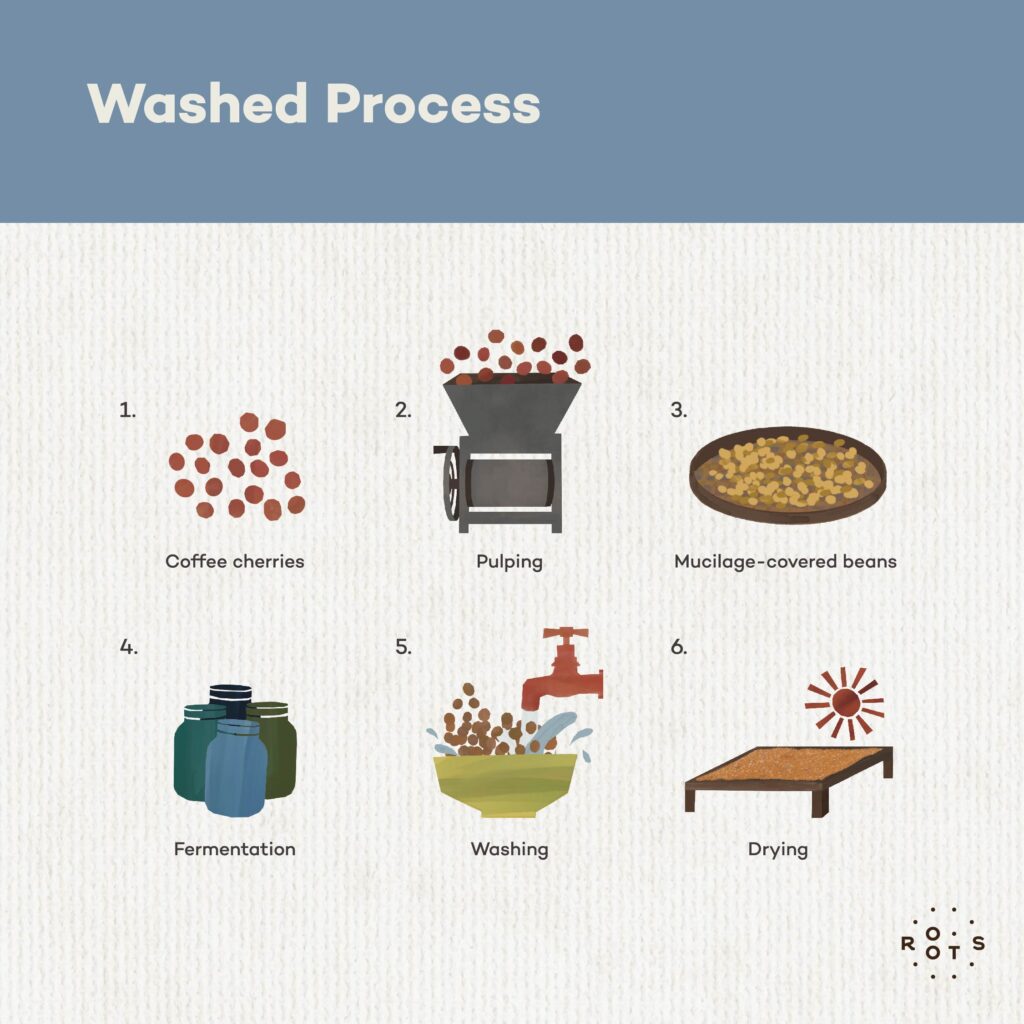
In contrast to regions like Ethiopia and Yemen, Central American coffee producers have the advantage of large plantation areas and abundant water resources, as well as access to machines that facilitate the process. The WASHED PROCESS is ideal for these areas, as it involves thorough washing of the cherries, peeling off the skin, fermenting in barrels for 1-2 days, and washing off the mucilage before drying. This method is completed in just a few days, making it suitable for large-scale production and sale.
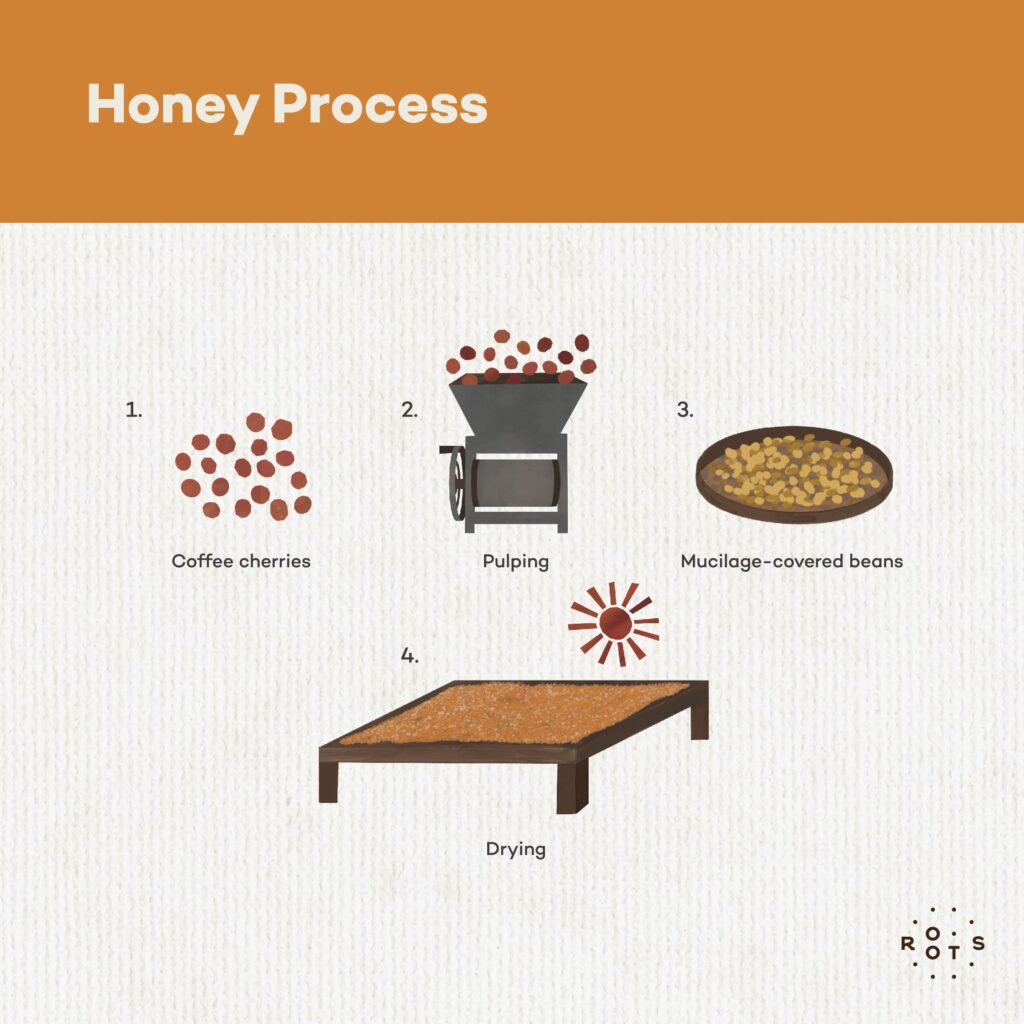
If you move down the map a little to Brazil, the availability of technology is similar to that of Central America, but the water resources are less abundant, making the Washed Process less feasible. Instead, processors rely on the Semi-Washed or HONEY PROCESS methods, which reduce the water needed to remove the mucilage from the coffee beans. Over the past 10 years, accessibility to technology has made it possible for coffee from a single plantation to produce a variety of characteristics. Additionally, some regions have focused on recruiting previously lacking resources, such as coffee developers who work with local farmers in the coffee plantation origin to push the boundaries of coffee.
WHO | WHO CREATES THE DIMENSION OF FLAVORS AND AROMA IN COFFEE?
Washed coffee typically has bold fruity flavors that make it easy to drink, while Honey coffee is known for its complex and funky taste. These flavor differences can be attributed to Microbes, such as yeast and bacteria, during the processing stage (Of course, other factors like the coffee varietal and maturity of the coffee plant can also play a role in creating a dimension of flavors, but today we’ll only be talking about the process of processing coffee).
Yeasts and bacteria are microscopic organisms that exist in every climate and space, including the skin of coffee cherries. The process of fermentation is a crucial step in coffee processing and occurs in every method, as it involves allowing these microorganisms to consume the sugars and compounds present in the mucilage or flesh of the coffee cherries. As a result of this microbial activity, the coffee develops its body and complex flavors.
Compared to other processing methods, the Natural Process method is known for producing coffee with a heavy body. This is because the process involves drying the whole coffee cherry with the husk and flesh intact, providing food for microorganisms to thrive. The drying process can take up to 1 month, which allows the microbes to work their magic slowly and develop the unique flavor profile.
As for the Honey Process, the skin of the coffee cherries are removed leaving the mucilage intact, which shortens the drying time to only 14-20 days. This shorter drying time results in a round taste with a lighter body than the Natural Process but less clean than the Washed Process. On the other hand, the Washed Process allows microorganisms to create flavors by eating the sugars from the mucilage during the 1-2 day fermentation before being thoroughly washed out (when drying, there is no food for microorganisms to work on). This results in Washed coffee with a bright and clean tone, making it an everyday cup for many people.
By solely reading about the three coffee processing methods, it may be challenging to comprehend the differences between them. The best way to truly understand the distinction is to taste it for yourself! You can taste the differences by ordering the ‘Basic Coffee Processing’ set (50g per bag) from P’ Sopa (Omkoi, Chiang Mai), which includes Washed, Honey, and Natural coffee. This set is perfect for sharing and tasting with your loved ones! It is available for purchase online via this link.





